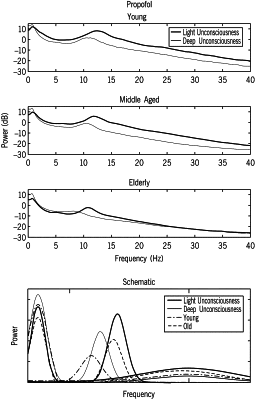| CPC A61B 5/0205 (2013.01) [A61B 5/369 (2021.01); A61B 5/374 (2021.01); A61B 5/4821 (2013.01); A61B 5/7246 (2013.01); G06F 17/18 (2013.01); G16H 50/20 (2018.01); G16H 50/70 (2018.01); A61B 5/02 (2013.01); A61B 5/38 (2021.01); A61B 5/7264 (2013.01); G06F 2218/00 (2023.01)] | 19 Claims |

|
1. A system for monitoring a patient experiencing an administration of at least one drug having anesthetic properties, the system comprising:
a monitoring device comprising sensors configured to acquire electroencephalogram (EEG) signals from the patient;
a monitoring system, in communication with the monitoring device, that comprises:
a user interface configured to receive a selection from a user indicating at least one patient characteristic including at least an age of the patient and at least one drug administered to the patient, and wherein the at least one drug is one of a plurality of drugs each having at least one corresponding template;
at least one processor configured to:
assemble the EEG signals acquired using the sensors into sets of time-series data using local referencing;
transform each set of locally referenced time-series data into spectrum information characterizing spectral power in at least one frequency band, and into phase-amplitude information characterizing a relationship between an amplitude of a first selected frequency band and a phase of a second selected frequency band;
analyze the spectrum information and phase-amplitude information using at least one templates corresponding to the at least one patient characteristic that includes at least the age of the patient and the at least one drug administered to the patient indicated by the selection;
determine at least a predicted future state of the patient based on the analysis; and
generate a report identifying at least one predicted future state of the patient induced by the at least one drug; and
a display for providing the report to the user.
|